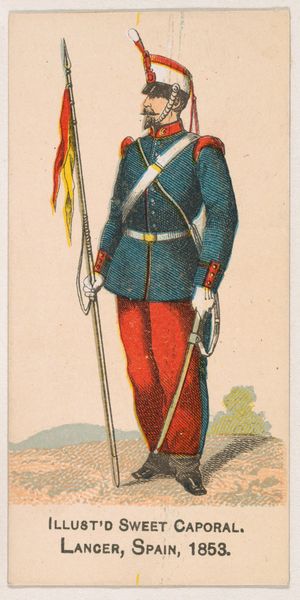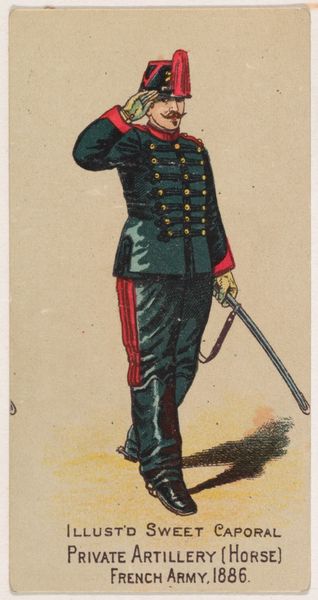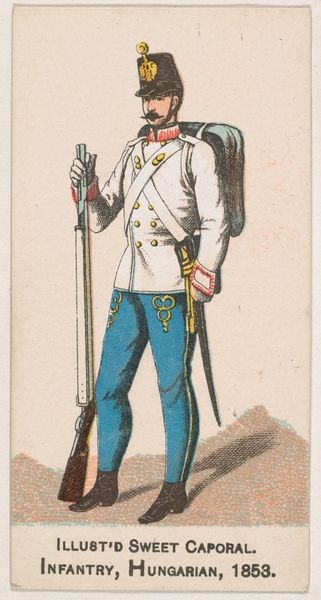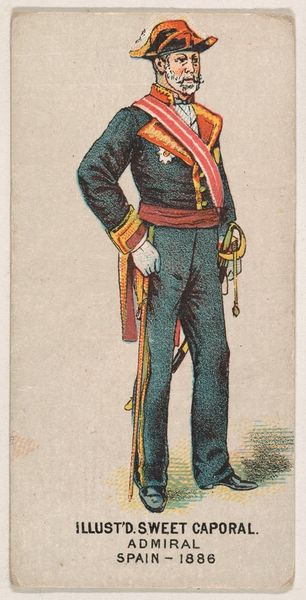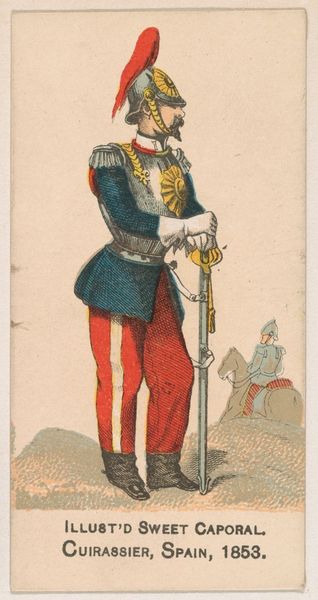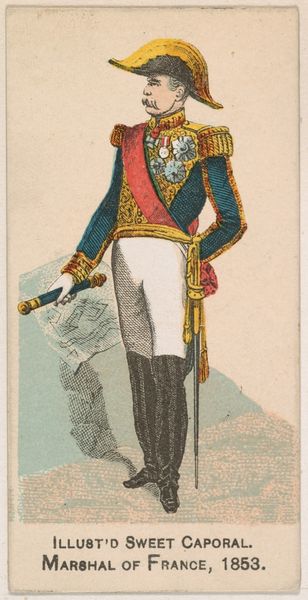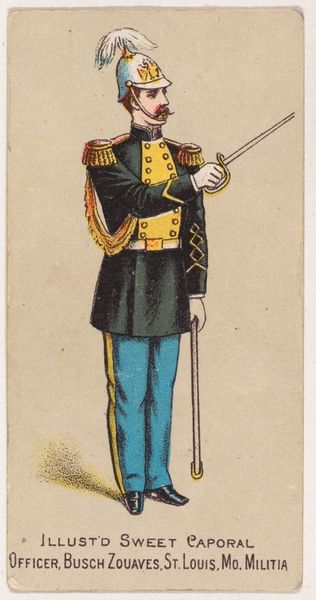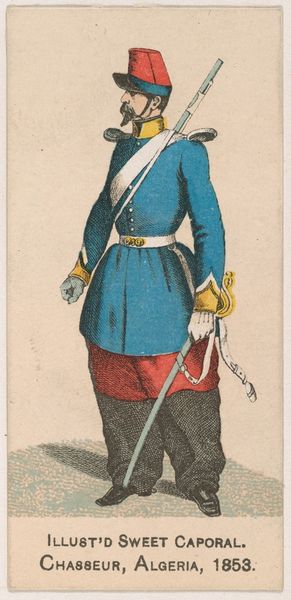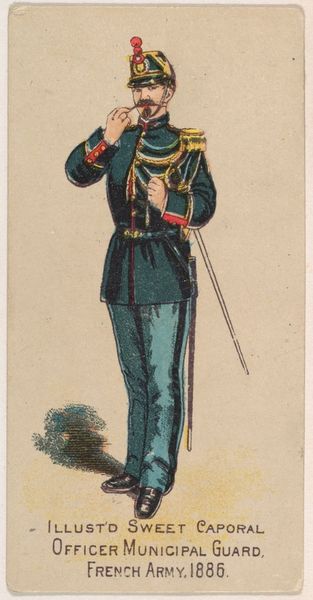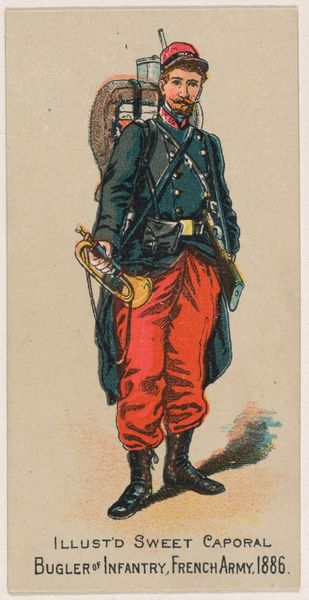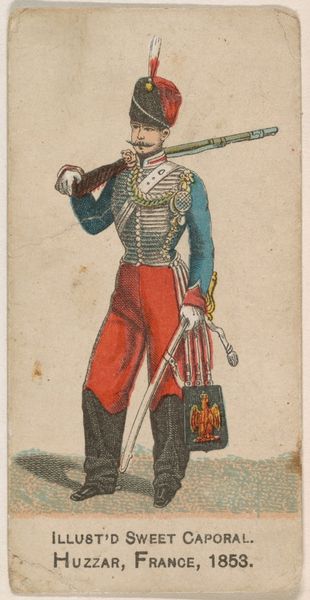
Lancer, France, 1853, from the Military Series (N224) issued by Kinney Tobacco Company to promote Sweet Caporal Cigarettes 1888
0:00
0:00
lithograph, print, ink
#
portrait
#
lithograph
# print
#
ink
#
watercolour illustration
Dimensions: Sheet: 2 3/4 × 1 1/2 in. (7 × 3.8 cm)
Copyright: Public Domain
Editor: Here we have “Lancer, France, 1853,” a lithograph from 1888 by Kinney Brothers Tobacco Company. The colours really pop—it’s quite striking. What stands out to you when you look at this? Curator: It’s interesting to consider this image within the context of late 19th-century industrial production. As a lithograph distributed by a tobacco company, this wasn’t conceived as "high art," but rather a commodity produced through a specific labor process for mass consumption. We need to consider the machinery involved in creating this print, the workers operating that machinery, and its circulation as a promotional item for Sweet Caporal Cigarettes. How does understanding this context shift our perspective on its artistic value? Editor: So, instead of focusing on the artistry of the image itself, we should consider who made it, how they made it, and why? Curator: Precisely! Consider the materials: ink, paper, the lithographic stone. The print quality indicates industrial processes, designed for mass production. Also, how does this imagery – a French lancer – connect to Kinney Brothers’ marketing strategies? Was there a growing taste for Japonisme and "exotic" aesthetics in commercial design? Editor: I see, it's like understanding how mass production shapes the aesthetic and meaning. Did these small promotional prints influence popular taste? Curator: It definitely raises questions about the boundaries between "fine art" and commercial design. These tobacco cards helped democratize art by making it accessible to a wide audience, blurring the lines between culture and commodity. Thinking about how this print was made, distributed, and consumed reveals its role in a much larger cultural and economic system. Editor: I hadn't considered that. It gives new insight into its purpose. Thank you. Curator: Exactly! Material analysis allows a richer appreciation of art as an historical object that emerges from particular production conditions.
Comments
No comments
Be the first to comment and join the conversation on the ultimate creative platform.
